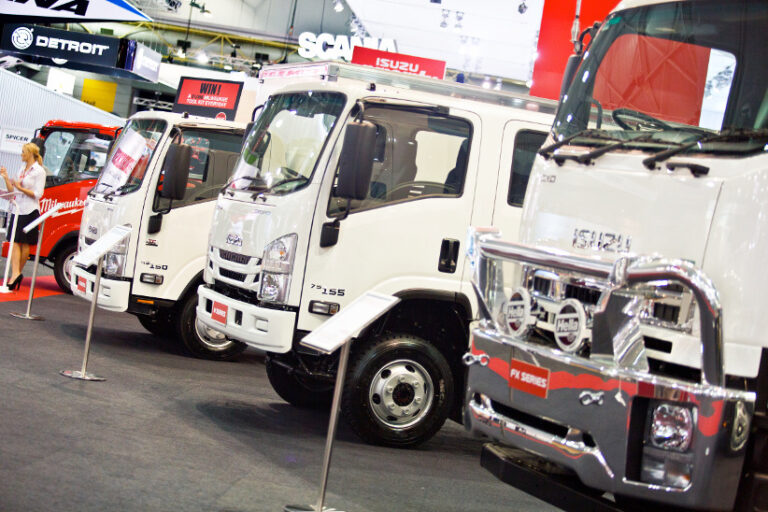This article was originally published by Isuzu Trucks.
Now more than ever, we are relying on the national supply chain to deal with the transportation of critical goods and equipment, including medical supplies, food and water, as well as the relentless demand of providing households with access to daily consumables.
Sadly, each year, too many people never make it home to their families because they become one of the statistics of fatal accidents with heavy vehicles on Australian roads.
At its heart, Chain of Responsibility (CoR) legislation is designed to provide a safe working environment for everyone in the transport supply chain, while also improving overall road safety.
To ensure each link in the chain remains solid, adhering to CoR is vital and applies to owners and operators within everything from smaller businesses to the largest corporations in the country.
Unfortunately, recent research reveals that small and medium-sized truck fleet owners and managers are not taking CoR as seriously as they should be. Many admit they have no CoR plans or processes currently in place at all.
With this in mind, here are our top 10 tips for keeping your truck fleet CoR-compliant.
-
REGULAR VEHICLE MAINTENANCE
Scheduled maintenance is a vital part of ensuring the safety and premium performance of your truck or fleet, and when it comes to being CoR-compliant, regular maintenance is a box that must be ticked.
By adhering to scheduled maintenance check-ups and committing to necessary repairs, you’re on the right side of your CoR obligations. You’re also helping your drivers enjoy a safer workspace and aiding your own effective business operations with greater vehicle reliability.
-
USE GENUINE OEM PARTS
Broken down on the highway again? By using genuine and OEM approved parts that come with a guaranteed warranty, you’ll avoid other truck warranty complications and costly repairs. Genuine parts undergo rigorous testing and come with the promise of quality, designed to keep your vehicle safely on the road—giving peace of mind when it comes to CoR compliance.
Yes, they can cost slightly more than non-genuine parts you can source elsewhere, but the long-term investment in maintaining a vehicle that runs with maximum efficiency and reliability can be far more financially rewarding than risking break-downs or parts availability issues.
-
USE AN OEM-TRAINED TECHNICIAN OR DEALERSHIP
Choosing the right parts is one key step in ensuring your vehicle fleet is CoR compliant. And working with authorised technicians and dealerships who understand your truck brand is another.
Using genuine parts fitted and maintained by a trained OEM service technician is a smart way to ensure complete vehicle compliance. It also helps to minimise potential issues caused by faulty parts or poor workmanship.
By placing your trust in a highly trained service professional, you can rest easy knowing your fleet is looked after in a way that enhances optimal truck and equipment performance.
-
SAFETY FEATURES SAVE LIVES… AND MONEY
Trucks with extra safety features can help you meet CoR obligations—and also protect the value of your fleet and drivers.
Enhanced safety features can be as simple and low-cost as ensuring your vehicles have visible safety grab handles or ladders, good mirrors, or a reversing camera. By protecting the safety of your workers, you also minimise the risk of a workplace accident.
-
MAKE FATIGUE MANAGEMENT A PRIORITY
Ensuring that drivers take sufficient rest breaks is vital. But managing the workload of everyone involved with your fleet is just as important: from warehouse staff through to your floor manager.
It’s scientifically proven that when we’re well-rested and attentive, we perform better. And when there’s trucks involved, this becomes even more important. To avoid fatigue-related accidents impacting your operations, make policies around fatigue management a priority and educate your team members on them.
-
SAY NO TO OVERLOADING
Being sure that loads do not exceed the prescribed mass and configuration limits for your truck or fleet just makes good sense, but unfortunately, it’s an all-too-common occurrence.
Mass, dimension and load requirements is serious business; it’s critical to CoR-compliance and the safety of drivers and road users—not to mention avoiding the big ticket fines that come with overloading.
-
CREATE A CULTURE OF COMMUNICATION
By encouraging every member of your team to share information about vehicle operations and potential mechanical issues, you can nip small problems in the bud, before they lead to bigger maintenance and operational issues.
With just a bit of training and emphasis, this is just one simple way to help adhere to CoR regulations in a way that doesn’t involve spending money.
-
USE TELEMATICS
Telematics deliver access to reliable, accurate data about your vehicle fleet. It’s a strategic way to manage adherence to CoR within your fleet, and it offers the added bonus of helping you gain better understanding of your daily operations and how to make them more efficient.
-
WATCH YOUR SPEED
Making sure that drivers are part of a workplace culture that does not celebrate speed is important. To be truly CoR-compliant, vehicles and drivers must not exceed speed limits—ever.
In some cases, having speed limiters installed in your fleet is necessary under law, but they may be worth considering even if your trucks don’t legally require them. In any case, playing it safe means playing it cool.
-
CHANGE DRIVER BEHAVIOURS
Good driving and equipment management is about more than just managing speed. Risky behaviours, angry reactions and other potentially negative habits need to be managed within a positive workplace culture framework.
By putting a spotlight on negative behaviours and providing positive information that leads to better reactions and responses, you’re not only remaining CoR-compliant, but you’re also ensuring the sustainable safety of your fleet and team members.






